카카오톡 상담 ID : Gcentre, Tel : 070 7010 3153, 이메일 : info@Gcentre.net
G센터는 전세계 주요 대학 컨설팅 및 어드미션 서비스를 제공하고 있습니다. 학교에 대한 정보는 아래의 학교 홈페이지, 구글, 페이스북, 유튜브 등의 링크를 통해 더욱 자세하게 나와 있으니 참고하시기 바랍니다.

QS 세계 대학 순위
위키백과, 우리 모두의 백과사전.
QS 세계 대학 순위 (QS World University Rankings)는 영국의 대학평가기관 Quacquarelli Symonds (QS)가 1994년부터 매년 시행한 대학들에 대한 평가표로, 전 세계 상위권 대학들의 랭킹을 매기고 있다. 대한민국 내에서는 일간지 조선일보와 중앙일보가 주요 세계대학 랭킹으로 인용하고 있다. 서울대학교는 2013년 세계 35위를 기록하였다.
세계대학순위
QS 세계 대학 순위에서 발표한 대학 순위 중, 최근 5년간 (2010-2013년)의 상위 50위 까지는 다음과 같다:
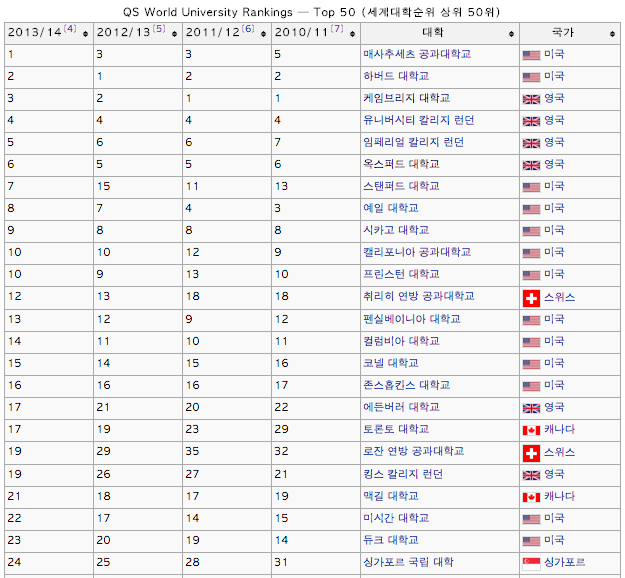
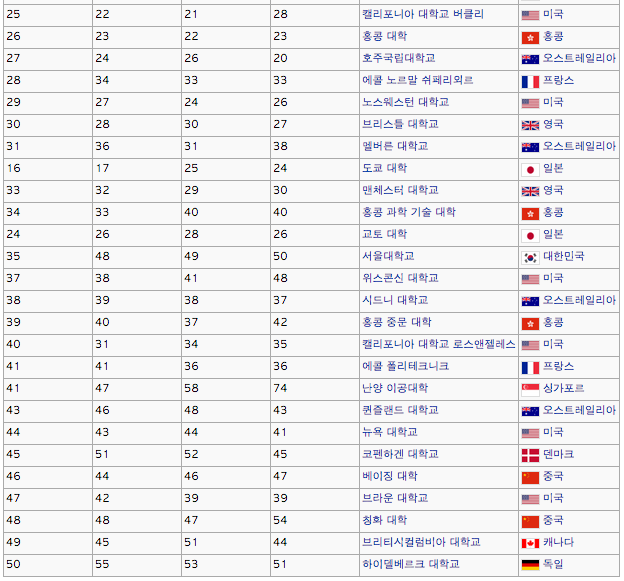
2014/2015 QS선정 세계 10대 대학입니다. 대부분 미국과 영국의 대학인 것을 확인할 수 있습니다.
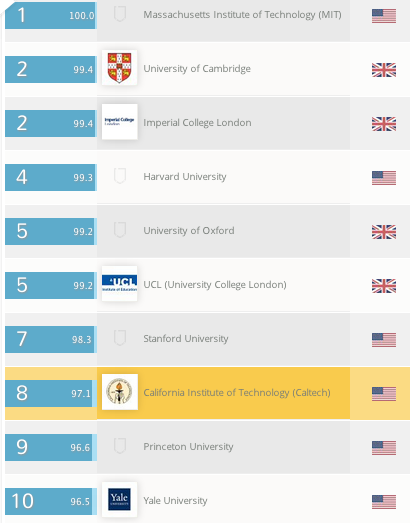
From Wikipedia, the free encyclopedia
QS World University Rankings are annual university rankings published by British Quacquarelli Symonds (QS). The publisher originally released its rankings in publication with Times Higher Education (THE) from 2004 to 2009 as the THE-QS World University Rankings, but such collaboration was terminated in 2010, with the resumption of publishing by QS using the pre-existing methodology and new cooperation between THE and Thomson Reuters releasing Times Higher Education World University Rankings. Today, the QS rankings comprise both world and regional league tables which are independent of and different from each other owing to differences in the criteria and weightings used to generate them. The publication is one of the three most influential and widely observed international university rankings, alongside the Times Higher Education World University Rankings and the Academic Ranking of World Universities.
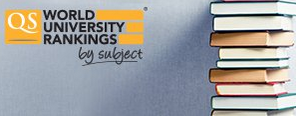
History
The need for an international ranking of universities was highlighted in December 2003 in Richard Lambert’s review of university-industry collaboration in Britain for HM Treasury, the finance ministry of the United Kingdom. Amongst its recommendations were world university rankings, which Lambert said would help the UK to gauge the global standing of its universities.
The idea for the rankings was credited in Ben Wildavsky's book, The Great Brain Race: How Global Universities are Reshaping the World,[6] to then-editor of Times Higher Education (THE), John O'Leary. THE chose to partner with educational and careers advice company Quacquarelli Symonds (QS) to supply the data, appointing Martin Ince, formerly deputy editor and later a contractor to THE, to manage the project.
Between 2004 and 2009, QS produced the rankings in partnership with THE. In 2009, THE announced they would produce their own rankings, the Times Higher Education World University Rankings, in partnership with Thomson Reuters. THE cited a weakness in the methodology of the original rankings,[8] as well as a perceived favoritism in the existing methodology for science over the humanities, as one of the key reasons for the decision to split with QS.
QS retained the intellectual property in the Rankings and the methodology used to compile them[citation needed] and continues to produce the rankings, now called the QS World University Rankings. THE created a new methodology with Thomson Reuters, published as the Times Higher Education World University Rankings in September 2010.
World rankings
Methodology
QS publishes the rankings results in key media around the world, including US News & World Report in the United States and Chosun Ilbo in Korea. The first rankings produced by QS independently of THE, and using QS's consistent and original methodology, were released on September 8, 2010, with the second appearing on September 6, 2011.
QS tried to design its rankings to look at a broad range of university activity.
Academic peer review (40%)
The most controversial part of the QS World University Rankings is their use of an opinion survey referred to as the Academic Peer Review. Using a combination of purchased mailing lists and applications and suggestions, this survey asks active academicians across the world about the top universities in fields they know about. QS has published the job titles and geographical distribution of the participants.
The 2011 rankings made use of responses from 33,744 people from over 140 nations in its Academic Peer Review, including votes from the previous two years rolled forward provided there was no more recent information available from the same individual. Participants can nominate up to 30 universities but are not able to vote for their own. They tend to nominate a median of about 20, which means that this survey includes over 500,000 data points.
In 2004, when the rankings first appeared, academic peer review accounted for half of a university's possible score. In 2005, its share was cut to 40 per cent because of the introduction of the Recruiter Review.
Faculty student ratio (20%)
This indicator accounts for 20 per cent of a university’s possible score in the rankings. It is a classic measure used in various ranking systems as a surrogate for teaching commitment, but QS has admitted that it is less than satisfactory.
Citations per faculty (20%)
Citations of published research are among the most widely used inputs to national and global university rankings. The QS World University Rankings used citations data from Thomson (now Thomson Reuters) from 2004 to 2007, and since then uses data from Scopus, part of Elsevier. The total number of citations for a five-year period is divided by the number of academicians in a university to yield the score for this measure, which accounts for 20 per cent of a university’s possible score in the Rankings.
QS has explained that it uses this approach, rather than the citations per paper preferred for other systems, because it reduces the effect of biomedical science on the overall picture – bio-medicine has a ferocious “publish or perish” culture. Instead QS attempts to measure the density of research-active staff at each institution. But issues still remain about the use of citations in ranking systems, especially the fact that the arts and humanities generate comparatively few citations.
QS has conceded the presence of some data collection errors regarding citations per faculty in previous years' rankings.
One interesting issue is the difference between the Scopus and Thomson Reuters databases. For major world universities, the two systems capture more or less the same publications and citations. For less mainstream institutions, Scopus has more non-English language and smaller-circulation journals in its database. But as the papers there are less heavily cited, this can also mean fewer citations per paper for the universities that publish in them. This area has been criticized for undermining universities which do not use English as their primary language. Citations and publications in a language different from English are harder to come across. The English language is the most internationalized language and therefore the most popular when citing.
Recruiter review (10%)
This part of the ranking is obtained by a similar method to the Academic Peer Review, except that it samples recruiters who hire graduates on a global or significant national scale. The numbers are smaller – 16,875 responses from over 130 countries in the 2011 Rankings – and are used to produce 10 per cent of any university’s possible score. This survey was introduced in 2005 in the belief that employers track graduate quality, making this a barometer of teaching quality, a famously problematic thing to measure. University standing here is of special interest to potential students.
International orientation (10%)
The final ten per cent of a university’s possible score is derived from measures intended to capture their internationalism: five percent from their percentage of international students, and another five percent from their percentage of international staff. This is of interest partly because it shows whether a university is putting effort into being global, but also because it tells us whether it is taken seriously enough by students and academics around the world for them to want to be there.
Aggregation
The data are aggregated into columns according to its Z score, an indicator of how far removed any institution is from the average. Between 2004 and 2007 a different system was used whereby the top university for any measure was scaled as 100 and the others received a score reflecting their comparative performance. According to QS, this method was dropped because it gives too much weight to some exceptional outliers, such as the very high faculty/student ratio of the California Institute of Technology. In 2006, the last year before the Z score system was introduced, Caltech was top of the citations per faculty score, receiving 100 on this indicator, because of its highly research and science-oriented approach. The next two institutions on this measure, Harvard and Stanford, each scored 55. In other words, 45 per cent of the possible difference between all the world's universities was between the top university and the next one (in fact two) on the list, leaving every other university on Earth to fight over the remaining 55 per cent.
Likewise in 2005, Harvard was top university and MIT was second with 86.9, so that 13 per cent of the total difference between all the world's universities was between first and second place. In 2011, the University of Cambridge was top and the second institution, Harvard, got 99.34. So the Z score system allows the full range of available difference to be used in a more informative way.
Quacquarelli Symonds (QS) is a British company specialising in education and study abroad. The company was founded in 1990 by Nunzio Quacquarelli. Today, QS has over 250 employees and operates globally from offices in London (head office in Hampstead, North London); New York, Boston, and Washington, D.C., United States; Paris, France; Singapore; Stuttgart, Germany; Sydney, Australia; Shanghai, China; Johannesburg, South Africa; and Alicante, Spain. QS provides services for undergraduates, graduates, Masters, Ph.D., MBA, and Executive MBA candidates. It offers publications and events to broaden the scope of study abroad. QS runs events and produces guides for postgraduates across 35 countries.
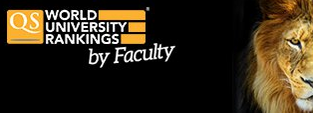
History
1988-90: QS Quacquarelli Symonds Ltd was founded as a student initiative whilst Nunzio Quacquarelli was completing his MBA at the Wharton School of the University of Pennsylvania.
1990: TopMBA Career Guide and TopMBA International MBA Recruitment and Salary Research launched.
1995: The first QS World MBA Tour was held in just two cities, London and Paris. Today, the tour travels to over 70 cities across five continents.
1996: QS TopMBA Global Recruiters Top 100 Business Schools, an alternative to business school rankings, providing a list of business schools currently preferred by the most international MBA recruiters. In 2009, the name of this report changed to "QS Global 200 Business Schools 2009: The Employers' Choice".
1998: QS TopMBA.com Applicants Research - a survey into the mindset and aspirations of MBA applicants.
2001: QS World Grad School Tour was launched; today, the tour visits over 40 cities in more than 30 countries.
QS acquired Global Workplace, a network for professionals and employers looking to connect with alumni from international business schools.
2002: QS Career Forums - a program of recruitment and career development events
2004: THE-QS World University Rankings launched in collaboration with the Times Higher Education
2005 : Scorecard - an online search and personal ranking tool of business schools worldwide
QS APPLE - The Asia Pacific Professional Leaders in Education annual conference and exhibition for international educators in Asia, Europe, America and Australasia.
QS Education Trust - a non-profit trust company providing scholarships for international study to candidates each year.
2005-2006: QS TopApply - a specialized CRM system was launched that integrates in with business schools' internal application and candidate management processes.
2007: QS TopInternships – a community website for helping first degree and Masters students locate internships, with an initial focus on English speaking countries around the world.
2008: QS Asian University Rankings launch announced in partnership with South Korea's Chosun Ilbo newspaper
2009 : TopUniversities & World of Study Tour launches in London serving high school students and young professionals looking to emigrate through an international degree or vocational qualification.
QS acquired German software company unisolution, a European supplier of software solutions and services for institutions of higher education in the area of internationalization.
2012: QS TopMBA Career Guide was launched in the Chinese language.